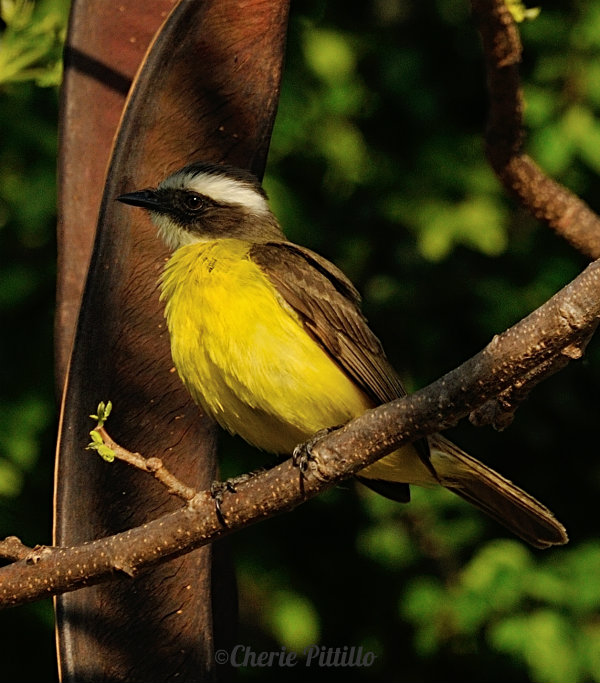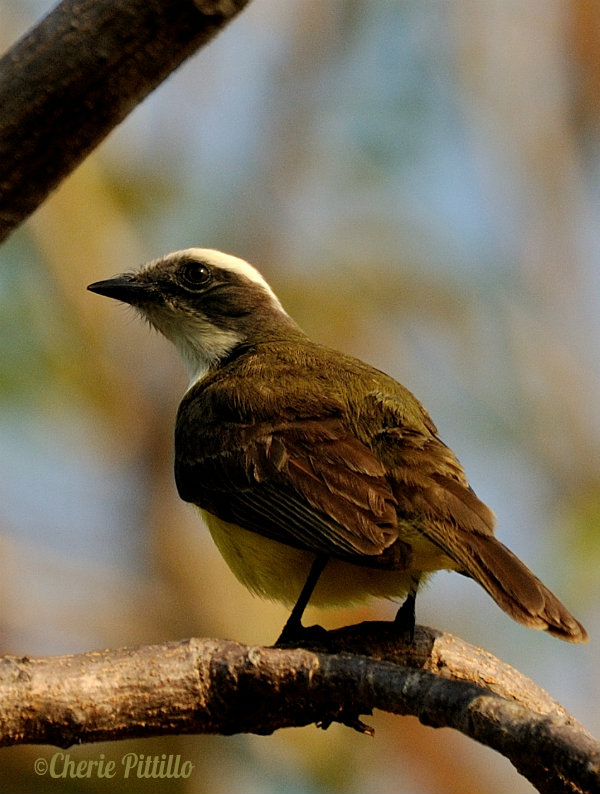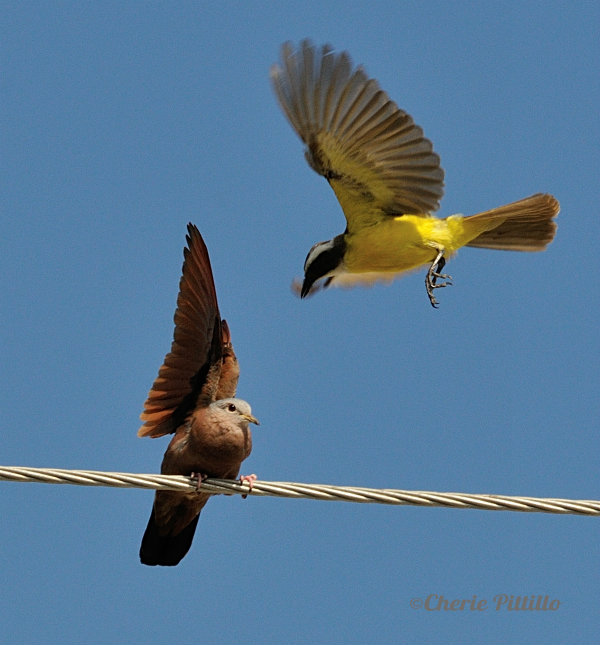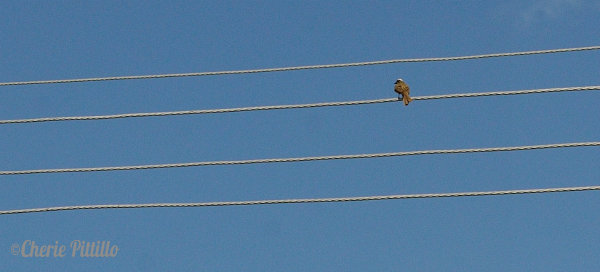Cherie Pittillo, has been publishing her material on The Yucatan Times for the last 5 years. She is a “nature inspired,” talented photographer and author, explores nature everywhere she goes. She’s identified 56 bird species in her Merida, Yucatan backyard view. Her column, published on the 7th and 21st of each month, features anecdotes about birding in Merida, Yucatan and beyond.
Contact: [email protected] All rights reserved, ©Cherie Pittillo
Social Flycatcher, Myiozetetes similis, Luisito Común (Spanish), X takay (Mayan)
Although one of the attractions of living in Merida is the friendliness of the people, unfortunately this doesn’t apply to the largest family of birds in the world, the tyrant flycatchers. Several members of this 400+ species group of feather floggers live in the Yucatan Peninsula, but today I concentrate on the so-called Social Flycatcher.
This species ranges from Mexico to Peru and N Argentina. I often see or hear it in my backyard, the many parks of Merida, and on most birding trips in the Yucatan. How could I not hear this?
(Click at 42 seconds and then think how loud a family group would sound .) http://macaulaylibrary.org/audio/165061/myiozetetes-similis-social-flycatcher-costa-rica-guanacaste-david-l-jr-ross
With its zebra-striped head adorning a white throat and vivid yellow vest, the adult resembles two other common tyrant flycatchers here, the Boat-billed Flycatcher and the Great Kiskadee. Both are larger and have bigger bills while the Great Kiskadee has rusty-color edged wings.
Why is this smallish bird called a tyrant flycatcher? One universal characteristic is its aggression. Another is its typical feeding behavior of sitting on a perch where it then sallies forth to catch an insect in the air. The Social Flycatcher also devours spiders, seeds, fruits, and even tadpoles.
If I stretched out a Social Flycatcher in my hand without choking the noisy tyrant, it would stretch from the base of my palm to the tip of my middle finger or about seven inches.
Now imagine a White-winged Dove and several smaller Ruddy Ground-Doves as they settle on utility lines to preen, relax, signal to mate, and mate. Next, one Social Flycatcher joins them.
Does the less-than-one ounce terrorist relax? No. Each Ruddy Ground-Dove raises a wing or two perhaps to scare this intruder. That doesn’t work. The intimidator pursues all of them as evidenced in these photos. Its “open lines of communication” worked.
I hereby rename this species the Anti-social Flycatcher because I see it chase every species that comes near it whether parrot or paloma (dove). Okay, it does stay paired all year, and its family is a social group that stays together until just after breeding season. I’ll give it that much sociability.
GO OUTDOORS TO DISCOVER ANOTHER SOCIAL NETWORK IN THE ANIMAL KINGDOM THIS WEEK.
DISCLAIMER: References do not agree on information about these species. Here are my resources: Sal a Pajarear Yucatán, Guía De Aves, A Guide to the Birds of Mexico and Northern Central America, Birds and Reserves of the Yucatan Peninsula, National Geographic Field Guide to the Birds of North America, A Guide to the Birds of Costa Rica, Kaufman Field Guide to Birds of North America,and http://macaulaylibrary.org/ a website from Cornell Lab of Ornithology
Cherie Pittillo, “nature inspired,” photographer and author, explores nature everywhere she goes. She’s identified 56 bird species in her Merida, Yucatan backyard view. Her column, published on the 7th and 21st of each month, features anecdotes about birding in Merida, Yucatan and beyond. Contact: [email protected] All rights reserved, ©Cherie Pittillo











